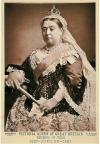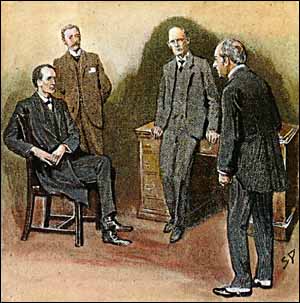
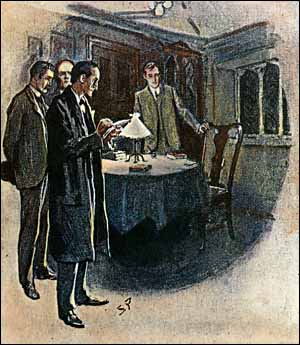
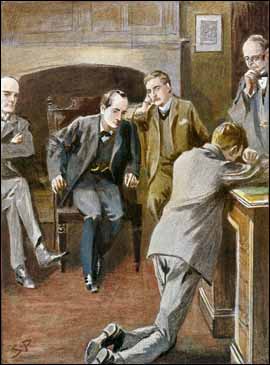
On an unseasonally warm, February 15th, 2012, Wednesday evening, two dozen Greek Interpreters gathered at Hershey's Steak and Seafood restaurant in East Lansing for their Winter meeting. We were particularly heartened by the attendance of several members who had been absent from recent meetings. The meeting opened with the customary Canonical Toasts to Mrs. Hudson, Mycroft Holmes, the second Mrs. Watson and The Woman. The evening's quiz and discussion centered on "The Three Students". Following a supper of roast beef or white fish, a resolution of the evening's quiz was conducted by Bill Reusch (the chemist).
 |  |  |
||
|---|---|---|---|---|
| HOW CAME YOU TO LEAVE THE KEY IN THE DOOR? | HE INSISTED ON DRAWING IT IN HIS NOTE-BOOK | COME, COME, SAID HOLMES, KINDLY, IT IS HUMAN TO ERR |
The discussion of this story ranged over several topics. Was the great university library where Holmes was conducting research at Oxford or Cambridge? Since no crime was committed and the outcome seemed to be fair and just, why did Watson term it a "painful scandal" that should be allowed to die out? Were these three students the only ones taking the scholarship examination? If so, would winning it have been much of an achievement? Some prominent scholars contend this episode was a hoax, perpetrated by Watson and designed to help Holmes overcome depression and boredom, possibly leading to further cocaine abuse. Is this consistent with Watson's statement that "Sherlock Holmes was pursuing some laborious researches in early English charters - researches which led to results so striking that they may be the subject of one of my future narratives."? This suggests that Holmes was far from depressed or bored.
Many clues are mentioned, including the key Bannister left in the door, the height of the window in Soames' apartment, the pencil shavings left by the intruder, the location of the chair chosen by Bannister, the scratch on the desk, and the pellets of black, doughy material found on the desk and in the bedroom. 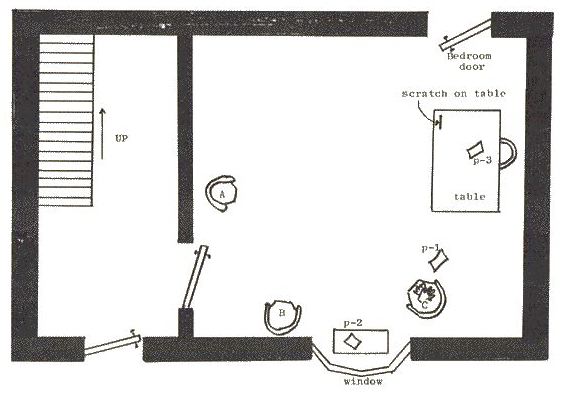 Of these, Holmes seems to regard the shavings as "the best and only final clue", leading to trips to stationers' shops for the origin of the pencil. These efforts produced no results, so the shavings ended up of no importance. However, he had also drawn conclusions based on the height of the three students, which he termed "very important". This can also be questioned by considering a plausible floor plan of Soames' office, provided by Thomas F. Hanratty (Crime scene reconstructions) and shown on the left. The proofs were spread out on a central table, so if the room were of a reasonable size they would have been at least 15 feet away from an outside observer. Many academics maintain rather messy desks and work tables, so an outside observer might have difficulty in recognizing the nature of any papers seen through the window.
Holmes himself says, "Then it amounts to this, Mr. Soames. that, unless the Indian student recognized the roll as being proofs, the man who tampered with them came upon them accidentally without knowing that they were there."
Of these, Holmes seems to regard the shavings as "the best and only final clue", leading to trips to stationers' shops for the origin of the pencil. These efforts produced no results, so the shavings ended up of no importance. However, he had also drawn conclusions based on the height of the three students, which he termed "very important". This can also be questioned by considering a plausible floor plan of Soames' office, provided by Thomas F. Hanratty (Crime scene reconstructions) and shown on the left. The proofs were spread out on a central table, so if the room were of a reasonable size they would have been at least 15 feet away from an outside observer. Many academics maintain rather messy desks and work tables, so an outside observer might have difficulty in recognizing the nature of any papers seen through the window.
Holmes himself says, "Then it amounts to this, Mr. Soames. that, unless the Indian student recognized the roll as being proofs, the man who tampered with them came upon them accidentally without knowing that they were there."
it therefore seems then that the clay pellets provided the most important evidence in this case.
Although "The Adventure of the Three Students" is not among the most popular of Arthur Conan Doyle's Sherlock Holmes stories, it has nevertheless attracted much critical debate over the years. "So Painful a Scandal", edited and Introduced by John Bergquist, BSI, provides several examples.
The meeting concluded with the reading of Vincent Starrett's "221B" poem, followed by our singing of The Anthem.
